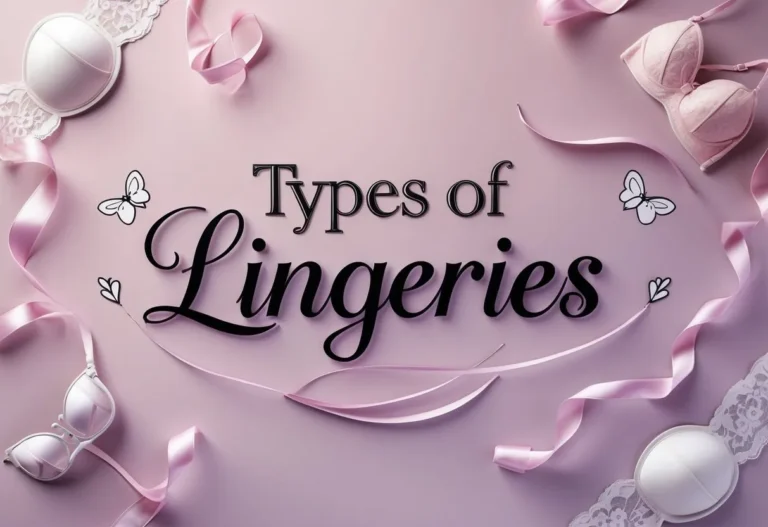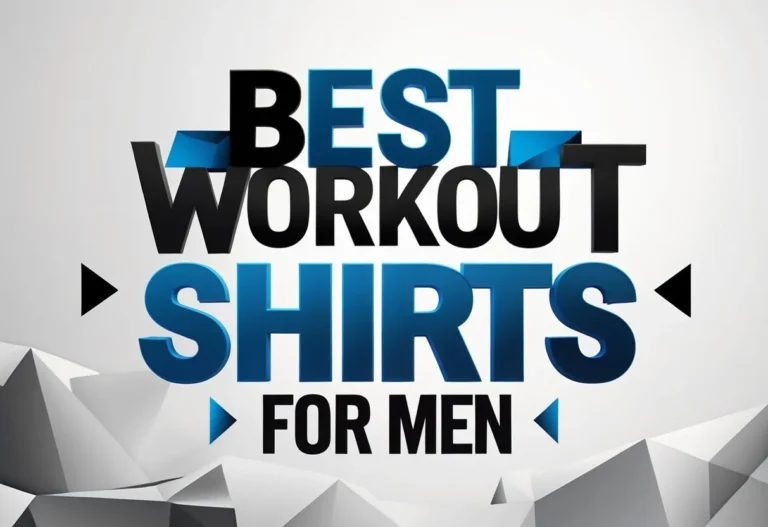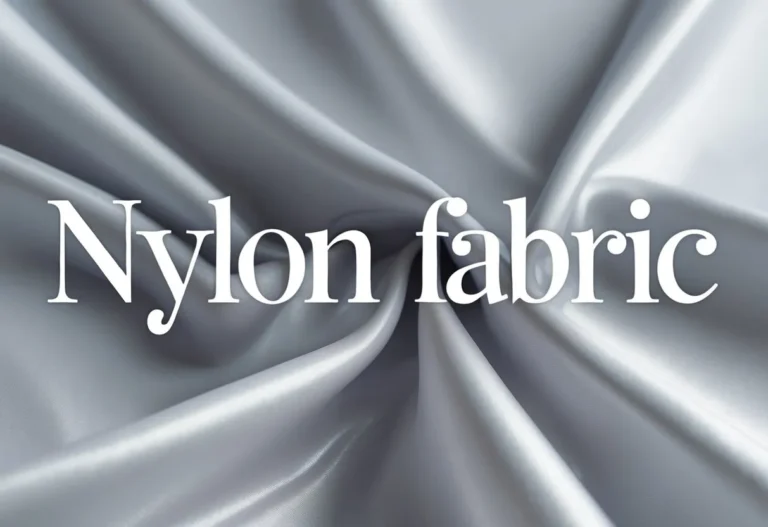Swimsuits come in many shapes and styles, each designed to suit different tastes, body types, and occasions. Choosing the right swimsuit can make a big difference in comfort and confidence, whether for swimming, sunbathing, or active water sports.
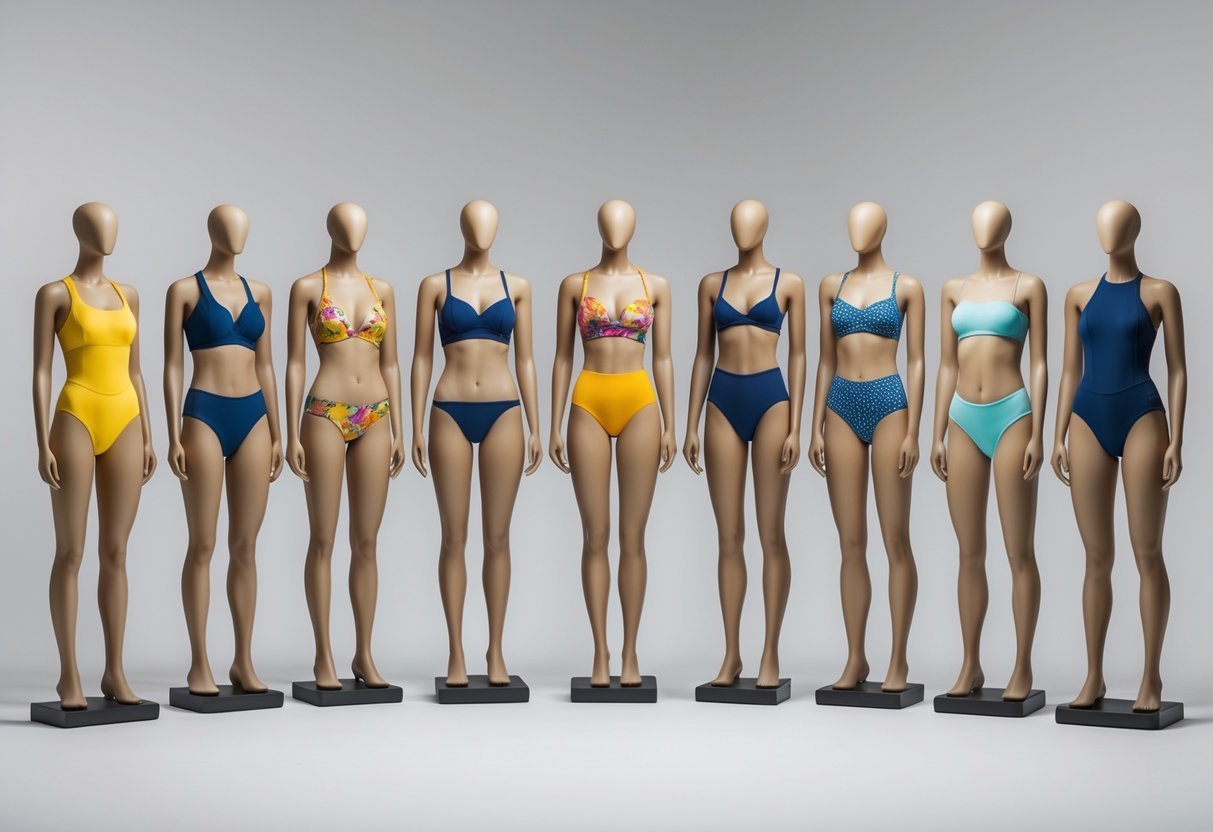
Understanding the different types of swimsuits helps individuals find the best fit and style for their needs. This guide will introduce 11 popular swimsuit styles, offering a clear view of what each type offers without going into too much detail.
1) Classic One-Piece
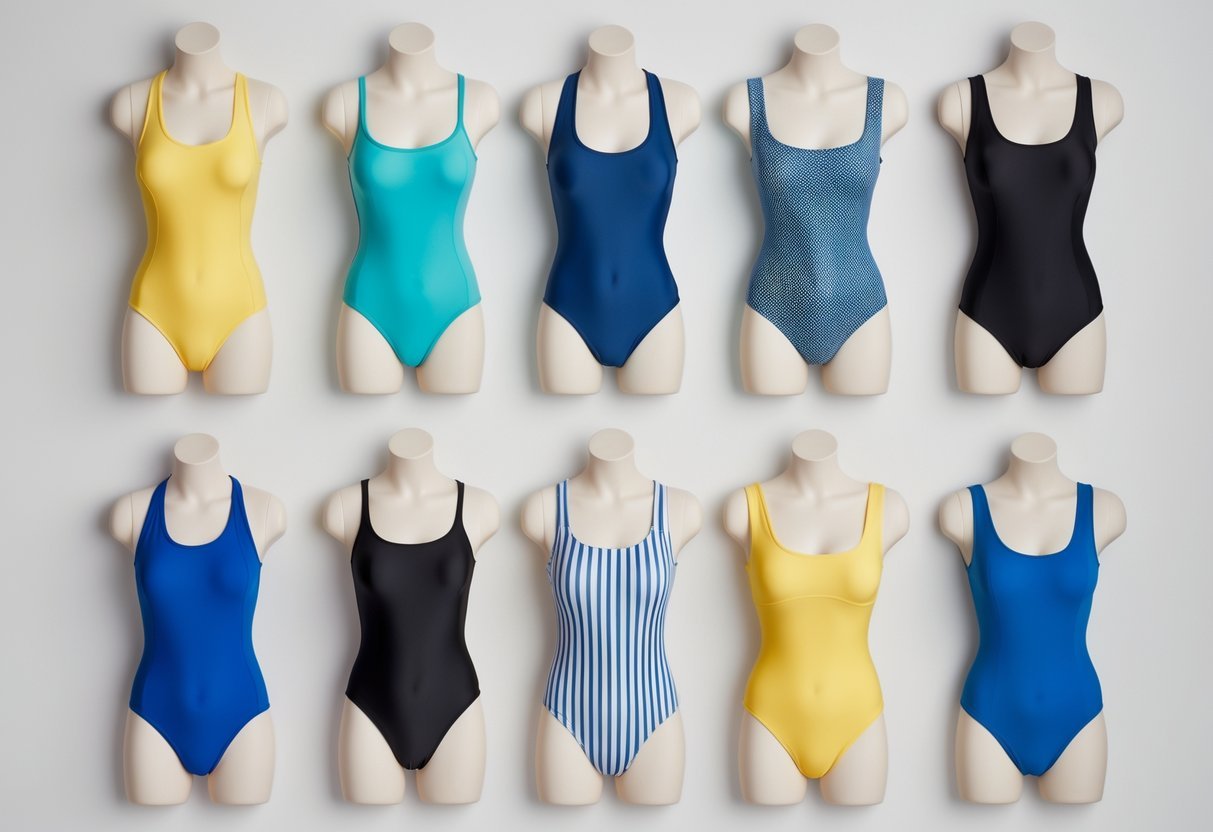
The classic one-piece swimsuit is a timeless style. It usually has a simple cut that covers the stomach, chest, and back evenly. This design offers moderate coverage, making it a popular choice for many body types.
It often features clean lines without extra frills or cutouts. This simplicity helps it look elegant and suitable for different occasions. Many women choose this style for both swimming and casual beachwear.
Classic one-piece swimsuits come in many colors and materials. They tend to provide good support and comfort. This makes them practical for activities like swimming laps or lounging by the pool.
2) High-Waist Bikini

The high-waist bikini has become a popular choice for many swimmers. It features bottoms that sit above the hips, often reaching the waist or just below the navel. This design gives more coverage compared to traditional low-rise bikini bottoms.
This style offers support and stays in place well, making it practical for active beach days. Its shape is inspired by vintage swimwear but updated to fit modern styles and comfort needs.
High-waist bikinis suit various body types. They can slim the waist and enhance curves. Many brands offer different styles, from full coverage to cheeky cuts.
The look is versatile and can be mixed with different bikini tops, like bandeau, halter, or triangle designs. This allows people to customize their swimwear to their taste and comfort level.
3) Triangle Bikini Top

The triangle bikini top is one of the most classic and popular swimsuit styles. It features two triangular fabric pieces that cover the bust, usually connected by thin strings that tie around the neck and back. This design allows for an adjustable fit.
This style is valued for its simplicity and versatility. It suits many body types because the adjustable straps can be tightened or loosened to fit different bust sizes comfortably. Some triangle tops include padding or underwire for extra support.
Triangle bikini tops come in many variations, from basic solid colors to bold prints. They are often paired with string bikini bottoms but can also be mixed with other styles for a unique look.
Because of its minimal design, the triangle top is great for sunbathing, as it allows for fewer tan lines. Many people choose it for casual beachwear or poolside use because it balances style and comfort well.
4) Bandeau Bikini
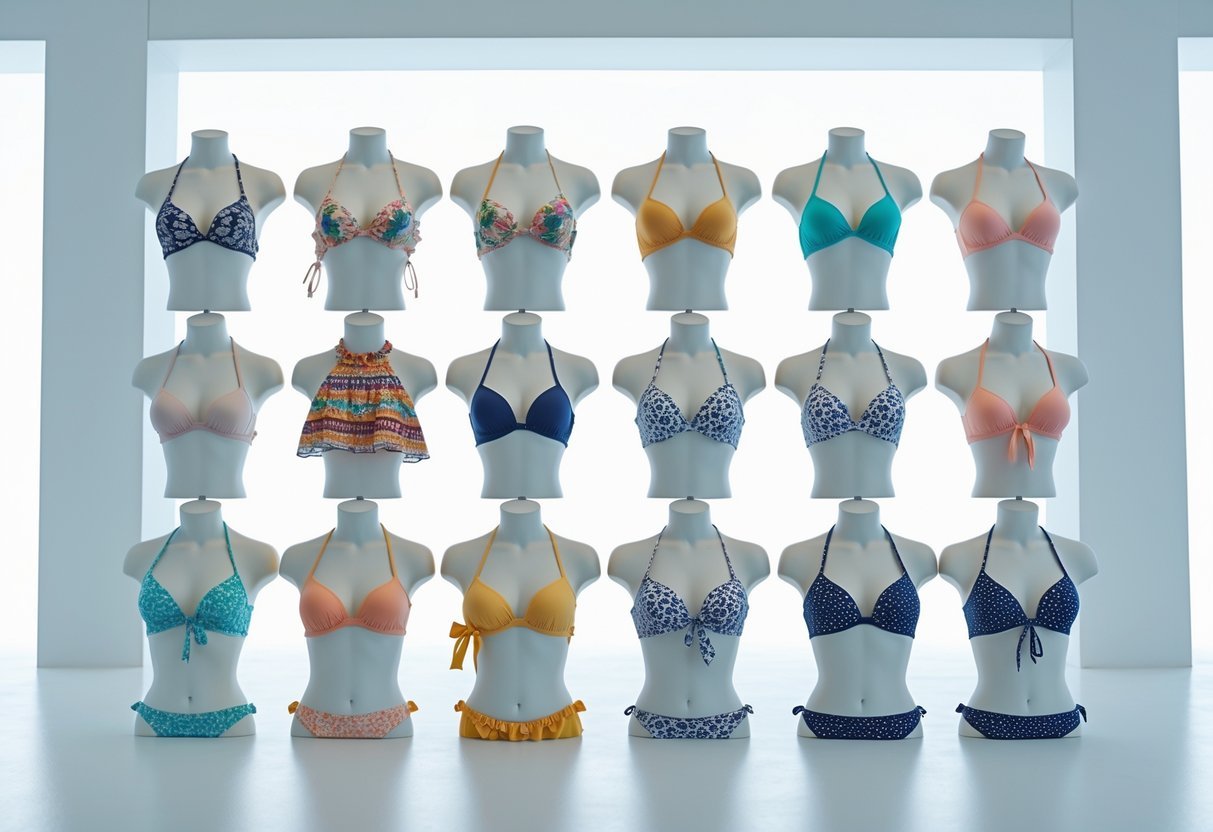
A bandeau bikini features a strapless top that wraps around the chest. It is designed to stay in place without shoulder straps, making it ideal for avoiding tan lines on the shoulders.
The material is usually stretchy and fits snugly for comfort and support. This style works well for many body types and is popular for its simple, sleek look.
Bandeau bikinis come in various colors and patterns, allowing wearers to choose styles that match their personal taste. Some versions include removable straps for added security.
This type of bikini is versatile and can be paired with different bottoms, from briefs to skirts. It is a common choice for those who want a clean, minimal design in swimwear.
5) Cut-Out One-Piece

Cut-out one-piece swimsuits have openings or panels that reveal parts of the skin. These designs add a stylish and modern touch to traditional one-pieces. They can vary from small, subtle cut-outs to larger, bold shapes.
This style blends fashion with function. It offers more coverage than a bikini but still lets wearers show some skin. The cut-outs are often placed to enhance the body’s natural shape.
Cut-out one-pieces work well for different body types. They can create a slimming effect or highlight certain areas. Many brands include options with support and coverage, so comfort is maintained.
This swimsuit type is popular for its versatility. It fits well for beach days, pool parties, or even layered under casual clothing. The designs range from simple to intricate, providing choices for different tastes.
6) Cheeky Bikini Bottoms
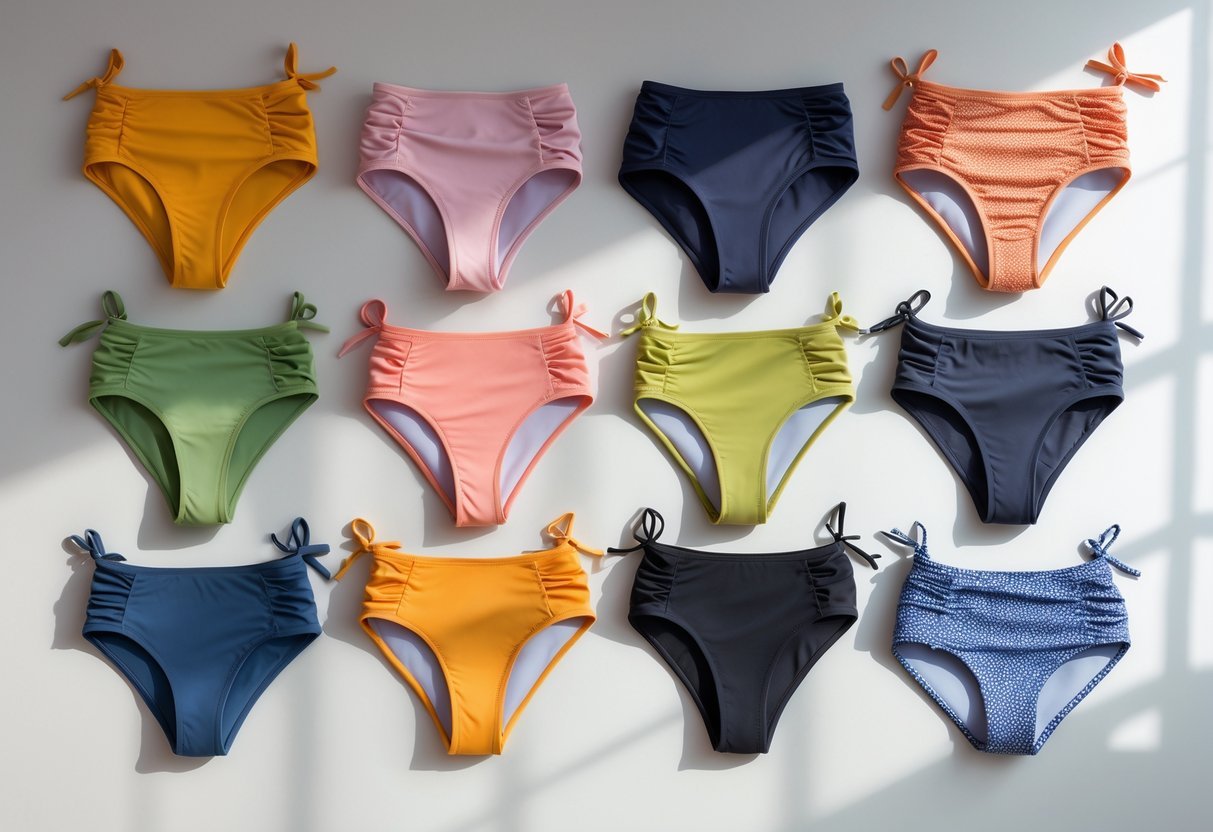
Cheeky bikini bottoms offer moderate coverage that shows more skin than traditional styles. They sit between a thong and a classic bikini bottom, providing a balance of comfort and a bold look.
This style works well with many types of bikini tops like triangles, halters, or bandeaus. It is popular among those who want a flattering fit without feeling too covered or too exposed.
Cheeky bottoms are often chosen for sunbathing or casual swimming. Some people prefer them because they give a sense of freedom and minimal fabric. They come in various prints and solid colors, making them easy to mix and match.
This style suits different body types and adds a youthful, playful touch to swimwear collections. It is a common choice for beachwear that feels both stylish and practical.
7) Sporty Tankini
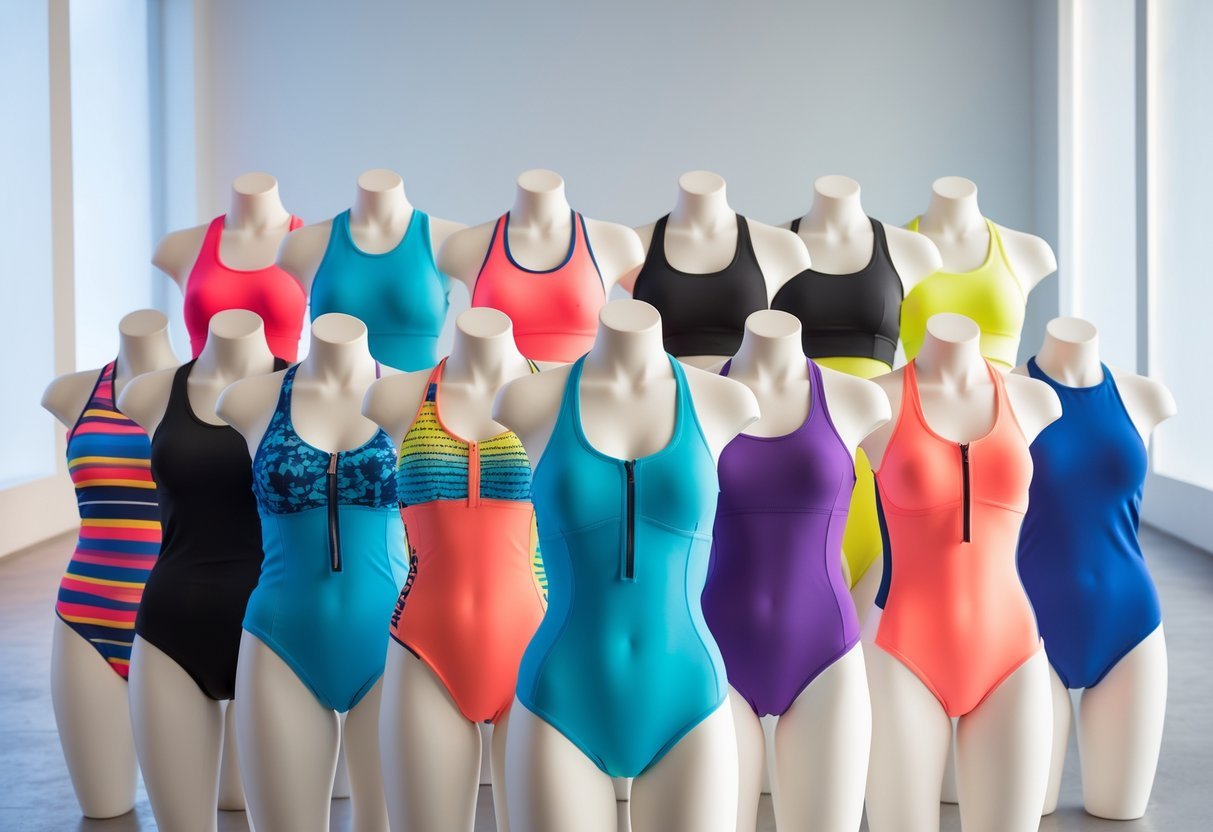
A sporty tankini is a two-piece swimsuit designed for active use. It has a tank-style top combined with bottoms, often with features that support movement and comfort.
This type of tankini is good for swimming, water sports, or other physical activities. It usually offers more coverage and support than a regular bikini. Some sporty tankinis include built-in bras, tummy control, or racerback designs to keep the top secure during activity.
Materials used are often quick-drying and durable to handle chlorine pools and saltwater. The fit focuses on both function and style, making it a practical choice for those who want freedom of movement without sacrificing appearance.
Sporty tankinis come in a range of designs, from simple to more athletic looks. They work well for people who need swimwear that stays in place and feels comfortable during physical activity.
8) Halter Neck Swimsuit
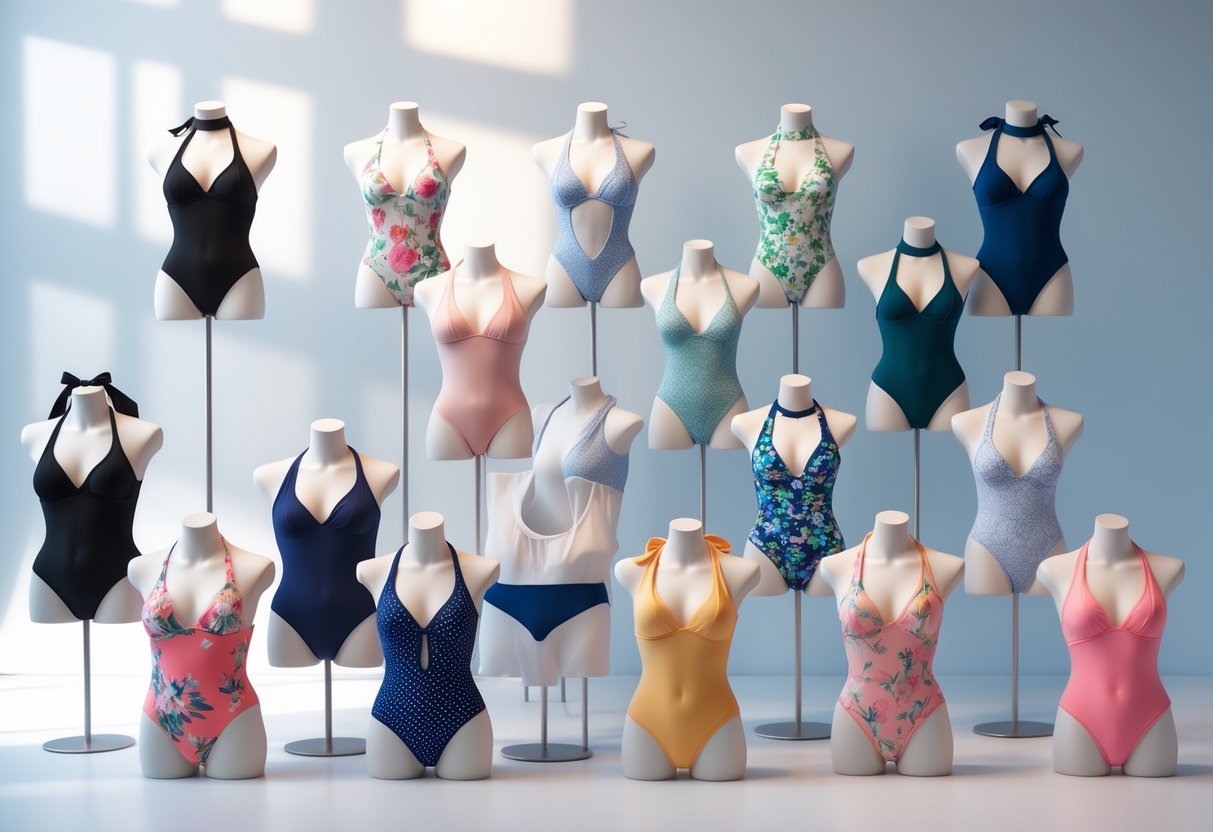
A halter neck swimsuit has straps that fasten or tie around the neck. This design leaves the shoulders and upper back mostly bare. It creates a clean, flattering neckline that works well for many body types.
This style often provides adjustable support. The wearer can tighten or loosen the straps to fit comfortably. It is especially helpful for those who need more support in the bust area.
Halter neck swimsuits come in both one-piece and two-piece styles. They can range from classic looks to modern designs with high necklines or plunging cuts. Many find this style both stylish and functional.
9) Monokini
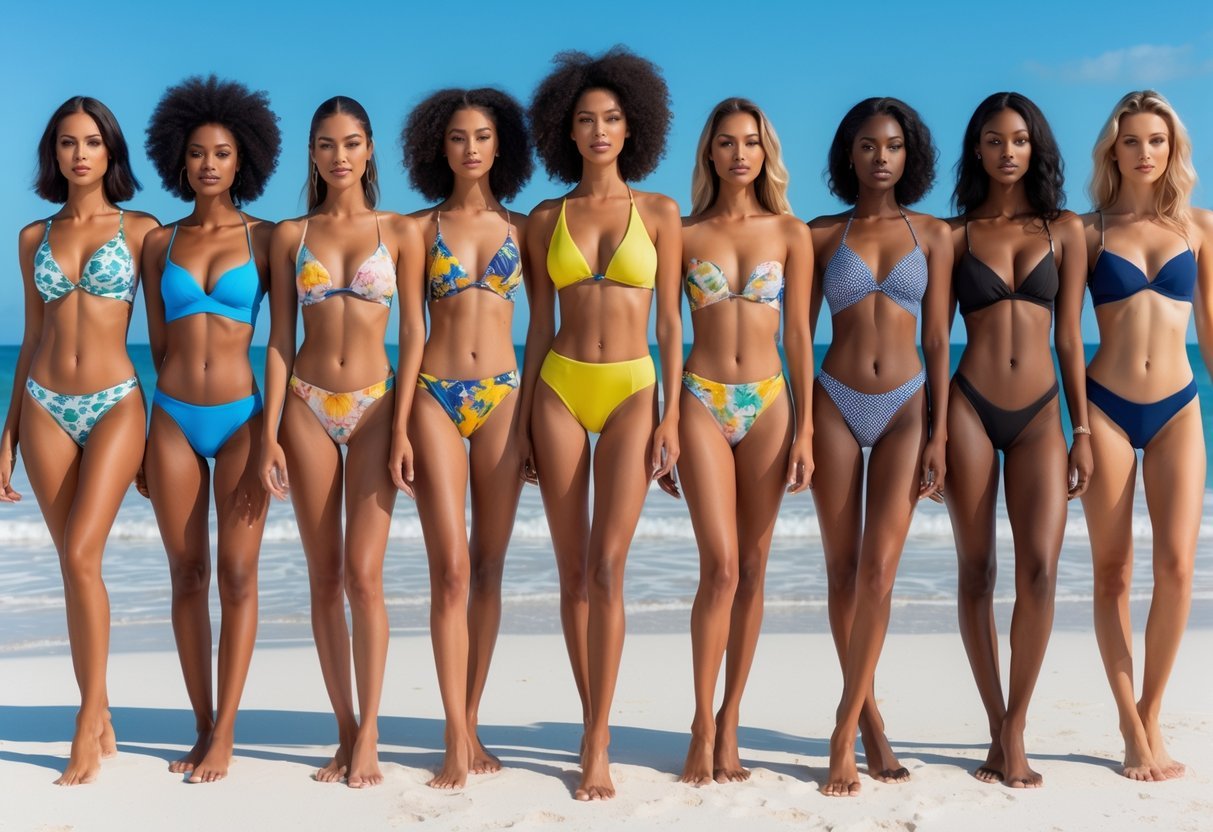
A monokini is a one-piece swimsuit that combines features of a bikini and a traditional one-piece. It usually has cutouts on the sides, front, or back. These designs add style while still offering more coverage than a bikini.
The monokini first appeared in the 1960s. It was known for its bold and unique look. Today, monokinis come in many styles to suit different body types and preferences. Some have high-cut legs or tie details for added fit.
This swimsuit style is popular for its mix of comfort and fashion. It works well for those who want a sexy look without wearing a two-piece. Many find the monokini a versatile option for beach or pool days.
10) Retro Pin-Up Swimsuit

The retro pin-up swimsuit takes its style from the 1940s and 1950s. It often features high-waisted bottoms and one-piece designs. These swimsuits are known for flattering many body shapes with their classic cuts.
They usually come in bold prints like polka dots or stripes. The look emphasizes a vintage, glamorous vibe while providing good coverage.
This style remains popular because it combines elegance with comfort. Modern versions keep the same timeless appeal but use updated fabrics and fits.
Many brands offer retro pin-up swimsuits, both in one-piece and bikini forms. They suit people who want a vintage-inspired look at the beach or pool without sacrificing style or function.
11) Rash Guard Swimsuit
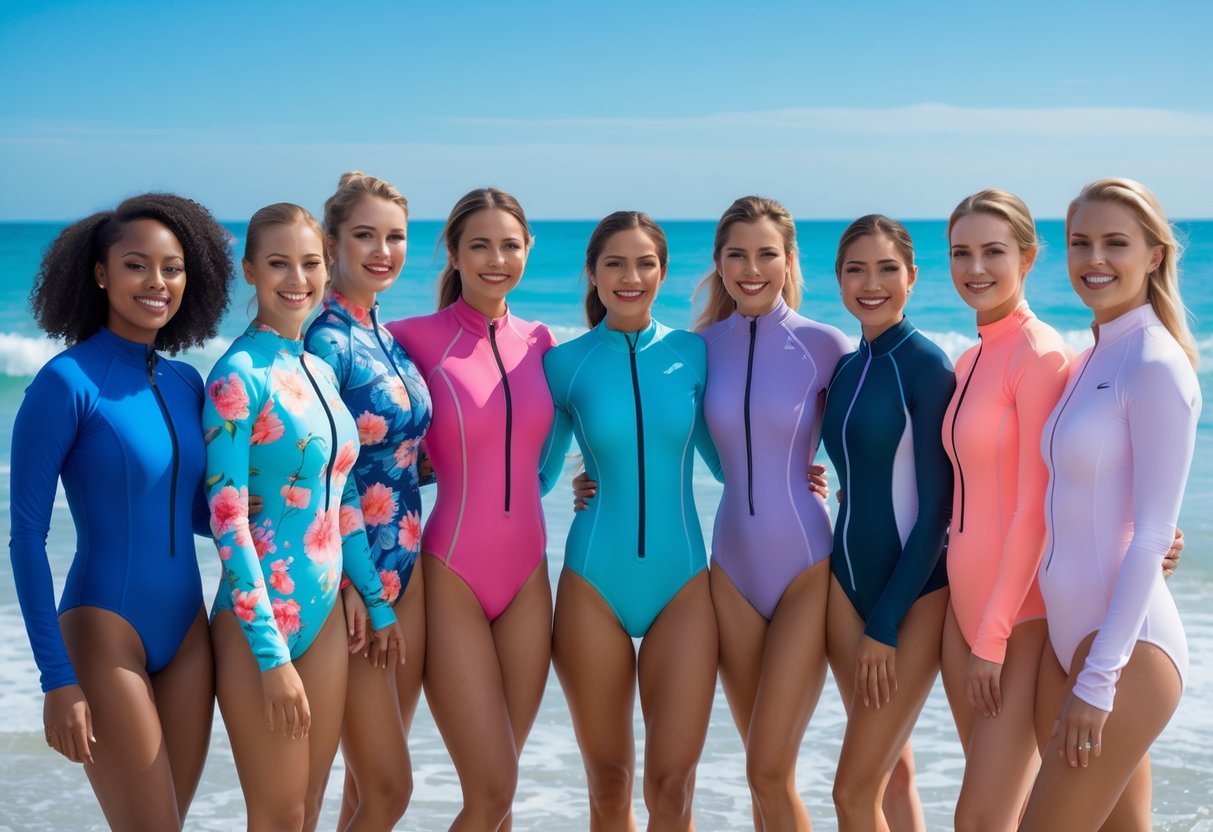
A rash guard swimsuit is a form-fitting top made from materials like spandex, nylon, or polyester. It is designed to protect the skin from sun exposure, chafing, and minor injuries during water activities.
Rash guards are popular among surfers, snorkelers, and paddleboarders. They provide UPF 50+ sun protection and help keep the body warmer in cooler water.
These swimsuits can come in long sleeve or short sleeve styles. Many people wear them over a regular swimsuit for extra coverage and comfort.
Though rash guards offer strong sun protection, they are not a replacement for sunscreen. Using both together offers better protection from UV rays.
Rash guard swimsuits are practical and functional. They suit people who are active in the water or those who want more skin coverage while swimming.
Choosing the Right Swimsuit Fabric
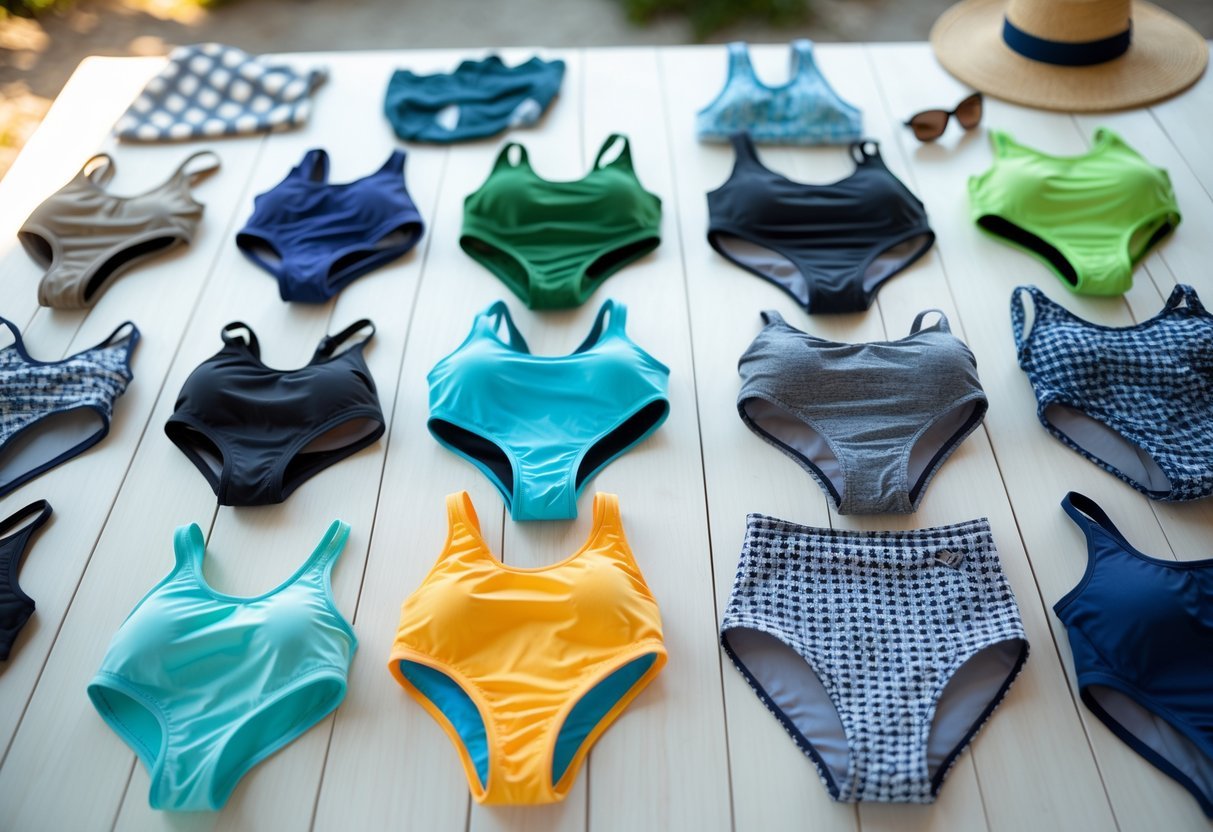
Swimsuit fabric affects how a suit feels, how long it lasts, and how well it works in water. Some fabrics focus on performance and durability, while others prioritize environmental impact or quick drying. Comfort is also a major factor when choosing the right material.
Performance Materials
Performance swimwear fabrics usually combine nylon, polyester, and elastane (spandex). Nylon is lightweight and stretchy, offering good shape retention. Polyester is more durable and resists chlorine better, which helps suits last longer. Elastane adds flexibility and helps the suit fit snugly.
Athletes often prefer fabrics with a high amount of elastane for better stretch during movement. Fabrics with chlorine resistance help maintain color and texture when used frequently in pools. Some performance swimsuits mix these materials for optimal balance between stretch, support, and durability.
Eco-Friendly Options
Eco-friendly swimsuit fabrics use recycled materials like nylon or polyester made from plastic bottles or fishing nets. These fabrics reduce waste and lessen environmental damage caused by traditional fabric production.
Brands offering eco-friendly options often use recycled polyester, which still performs well in water. These fabrics keep many of the qualities swimmers want, like stretch and durability, but with a smaller environmental footprint. It is important to check if the fabric is certified or branded as recycled for the best eco choice.
Quick-Dry vs. Comfort
Quick-dry fabrics often include polyester blends, which shed water faster than nylon. This feature helps swimmers stay comfortable after leaving the water. Quick-drying suits also reduce the chance of chafing or irritation.
Comfort fabrics focus more on softness and flexibility, often with a high elastane content. These may take longer to dry but feel better on the skin during extended wear. Choosing between quick-dry and comfort depends on how the swimsuit will be used, whether for sport or casual swimming.
| Feature | Quick-Dry Fabrics | Comfort Fabrics |
|---|---|---|
| Drying Speed | Fast | Slower |
| Softness | Moderate | High |
| Stretch | Moderate to High | High |
| Best For | Pool workouts, beach | Leisure swimming |
Care and Maintenance Tips

Proper care helps swimsuits keep their shape, color, and elasticity. Attention to washing and storage can prevent damage from chlorine, saltwater, and sun exposure. Small actions after each use can make a big difference in how long a swimsuit lasts.
Washing Best Practices
Swimsuits should be rinsed immediately after use with cold, fresh water to remove chlorine, salt, and sunscreen. Avoid hot water as it can break down the fabric fibers. Use a mild detergent designed for delicate fabrics or swimwear.
Hand washing is best. Avoid machine washing or using bleach, which can cause fading and reduce elasticity. Gently squeeze out excess water instead of wringing the suit, which can stretch it out. Always dry swimsuits flat in a shaded area—never in direct sunlight or a dryer, as heat damages the material.
Extending Lifespan
To keep swimsuits lasting longer, rotate a few suits if swimming often. This reduces constant wear on one piece. Store suits flat or folded loosely rather than hanging, to maintain shape.
Avoid sitting on rough surfaces, which can snag the fabric. Also, limit exposure to oils and lotions by rinsing suits well after each use. Regular care protects the fabric’s color and fit, helping the swimsuit stay comfortable and looking good over time.
Frequently Asked Questions
Swimsuit choices depend on body shape, size, and personal comfort. Materials affect durability and softness. Different swimsuit cuts come in and out of style each season. Understanding these points can help with selecting and caring for swimwear.
What styles of swimsuits are best for different body types?
For pear-shaped bodies, high-waist bikinis and cut-out one-pieces can balance proportions. Hourglass figures often suit classic one-piece and triangle bikini tops to highlight curves. Bandeau bikinis work well for smaller busts by creating a fuller look.
How do I determine the correct swimsuit size for me?
Measure the chest, waist, and hips to compare with the brand’s size chart. Swimsuits should fit snugly without digging into the skin. Trying on different styles helps find the best fit, as sizing can vary between brands.
What materials are typically used for durable and comfortable swimsuits?
Nylon and polyester blended with spandex are common. These fabrics provide stretch, shape retention, and quick drying. Chlorine-resistant materials increase swimwear lifespan when used regularly in pools.
Which swimsuit cuts are considered to be most fashionable for this season?
Cut-out one-pieces and high-waist bikinis are trending for their modern look. Classic one-piece swimsuits remain popular for their timeless style. Triangle bikini tops and bandeau bikinis continue to be favored for simplicity and versatility.
Can you explain the differences between a monokini and a tankini?
A monokini is a one-piece swimsuit with large cut-outs exposing parts of the stomach or sides. A tankini combines a tank-style top with bikini bottoms for more coverage and easy mix-and-match options.
What are the best care practices to maintain the quality of my swimsuit?
Rinse swimsuits in cold water immediately after use to remove chlorine or salt. Hand wash with mild detergent and avoid wringing or twisting. Lay flat to dry away from direct sunlight to prevent fabric damage.

